Explore the moves:
Kettlebell Deadlift ⋅ Goblet Squat to Box ⋅ Cable Row ⋅ March in Place ⋅ Palloff Twist ⋅ Dead Bug
The adage “use it or lose it” may ring true when it comes to fitness pursuits, but it is in dire need of revision: “Use it or lose it — but not necessarily forever.” With the right approach, you can improve your fitness at any age.
“We are all so much more capable than we give ourselves credit for,” says Alisha Dy, NASM-CPT, PES, CES, a Minnesota-based Life Time trainer who works with older adults. “Society deems people seniors at 65-plus, but many think of themselves as ‘old’ long before that.”
But people of all ages — medical advice permitting — can achieve functional fitness (see “A Guide to Exercise at Every Age“).
The following workout focuses on building and maintaining strength, balance, and agility. The exercises develop core, leg, and posterior-chain strength while also improving motor skills — all markers of basic function that we assume decline with age.
The Workout
Perform the following moves two or three times per week. The time and intensity depends on the individual. Before you begin, ask yourself, How am I feeling? Did I sleep well? What am I ready for? Avoid the trap of following “shoulds” and external expectations, says Dy. Instead, follow your intuition and choose modifications as necessary.
To that end, start with the exer-cises that make the most sense for you, and in time you’ll likely find that your abilities expand. Be patient and stay consistent.
Kettlebell Deadlift
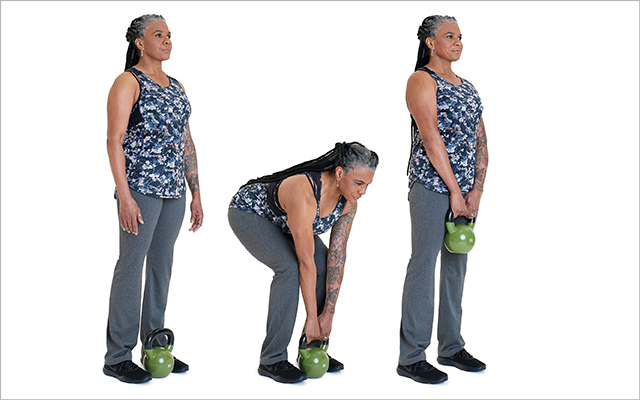
Why it’s great: Strengthens the posterior chain, including the upper back, glutes, hamstrings, and calves. The hinge pattern of a deadlift improves hip stability and mobility.
How to do it:
- Stand with a kettlebell placed between your feet. Hinge at the hips and allow your knees to bend, reaching down to grasp the handle with both hands.
- With your arms straight and head in a neutral position, stand fully upright by pushing your hips forward. Squeeze your glutes at the top to achieve a full lockout.
- Hinge at the hips and bend the knees to lower the weight to the floor.
- Perform between three and five sets of eight to 12 repetitions.
Make it easier: Elevate the start–finish position by placing the kettlebell on a low box.
Goblet Squat to Box
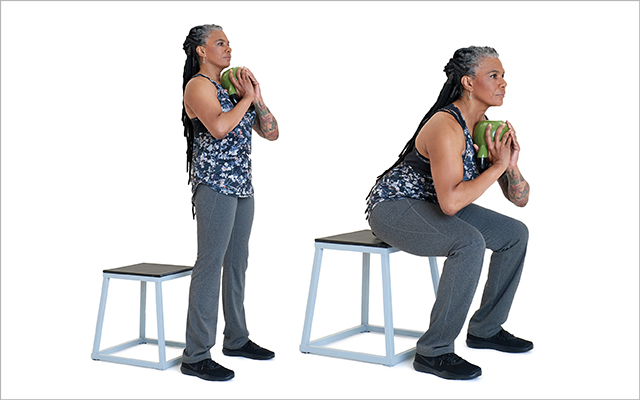
Why it’s great: Activates the glutes and helps you hit a consistent squat depth. Holding a kettlebell “goblet-style” engages the core to keep an upright posture.
How to do it:
- Holding a kettlebell at chest height in front of a knee-high box or bench, push your butt back and bend at the knees to lower into a squat until you feel the box behind you. Keep an upright torso and don’t let your knees cave in.
- Squeeze your butt as you return to standing.
- Perform between three and five sets of eight to 12 reps.
Make it easier: Perform without weight or by sitting back onto a sturdy chair with arm rests for added support.
Cable Row
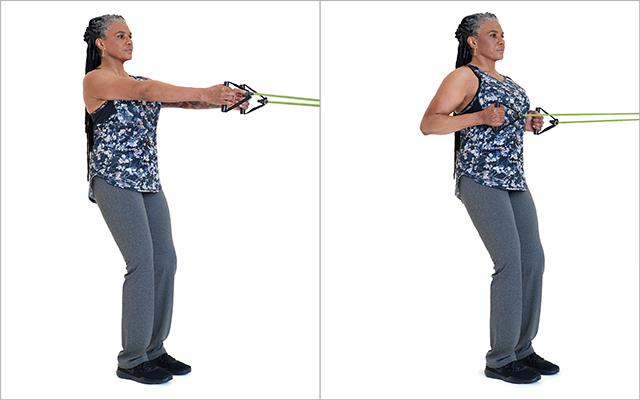
Why it’s great: Strengthens the upper back, shoulders, and lats while mobilizing the scapulae.
How to do it:
- Loop a handled resistance band around a sturdy anchor, such as a pole or squat rack, and hold a handle in each hand. Step back until your arms are fully extended and there is some tension in the band.
- Retract your shoulder blades, then pull on the handles to guide them back. As your elbows bend, draw them down and back, keeping your shoulders away from your ears.
- Keep pulling until your hands graze the front of your rib cage.
- Squeeze your shoulder blades together, and then reverse the movement.
- Perform between three and five sets of eight to 12 reps.
Make it easier: Sit on a sturdy box, bench, or chair that allows you to plant both feet firmly on the floor with knees bent at about 90 degrees.
March in Place
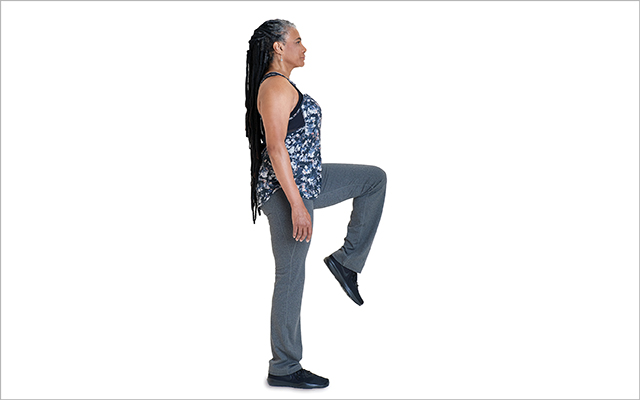
Why it’s great: Improves balance, hip stability, and core strength.
How to do it:
- Stand tall with your feet about hip width apart, shoulders pulled back and down, and core braced.
- Shift your weight onto one foot while you slowly raise the other. Don’t let your body sway.
- Lower that foot and repeat on the opposite side. Each step counts as one marching rep.
- Perform between three and fives sets of 20 marches.
Make it easier: March while seated on a sturdy bench or chair that allows you to firmly plant both feet and bend knees at about 90 degrees.
Make it harder: Hold a weight at chest height to build strength in your grip, core, and back as well as improve balance and hip stability. See a demonstration of the Goblet March.
Palloff Twist
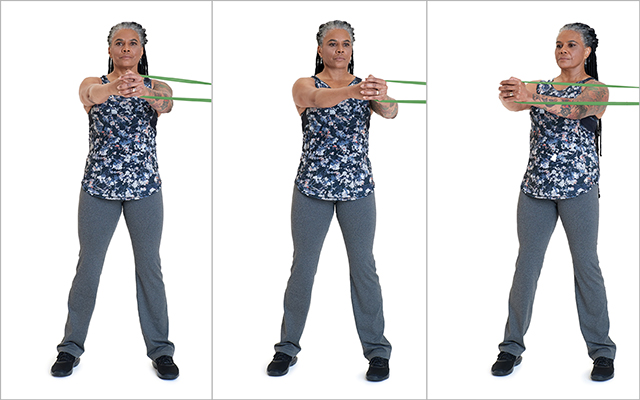
Why it’s great: Combines rotation and antirotation, strengthening the core while stabilizing and protecting the lumbar spine. Performing this move upright reduces stress on the neck and lower back.
How to do it:
- Loop a resistance band around a strong beam or railing at chest height. Grip the band with both hands, and step sideways until you feel slight tension in the band. Press the band forward, keeping hips and shoulders square.
- Rotate 45 degrees toward your anchor point and then rotate in the opposite direction, ending 45 degrees away from your starting point.
- Perform between three and five sets of eight to 12 reps per side.
Make it easier: Take out the rotations and hold the press for up to 30 seconds on each side.
Dead Bug

Why it’s great: Develops core stability and cross-body coordination.
How to do it:
- Lying on your back, lift your arms and legs into the air. Your arms will be straight over your chest and knees bent at about 90 degrees.
- Engage your core, drawing your ribs down and pressing your lower back into the floor. Extend one leg to straighten it while dropping the opposite-side arm overhead. Reverse and repeat on the opposite side. Alternate sides.
- Perform between three and five sets of 20 reps (each extension counts as one).
Make it easier: Hold a stability ball between your arms and legs. Then extend only one leg or arm at a time.
This originally appeared as “Forever Fit” in the June 2018 print issue of Experience Life.

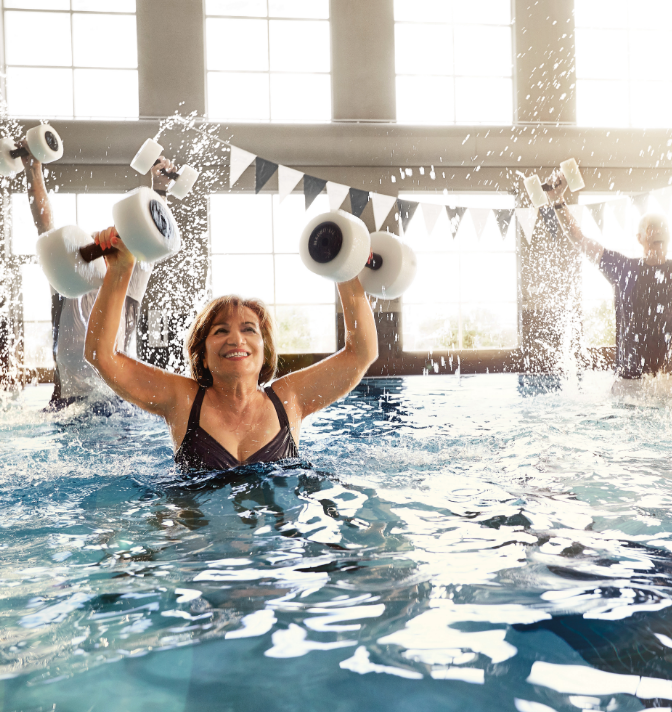
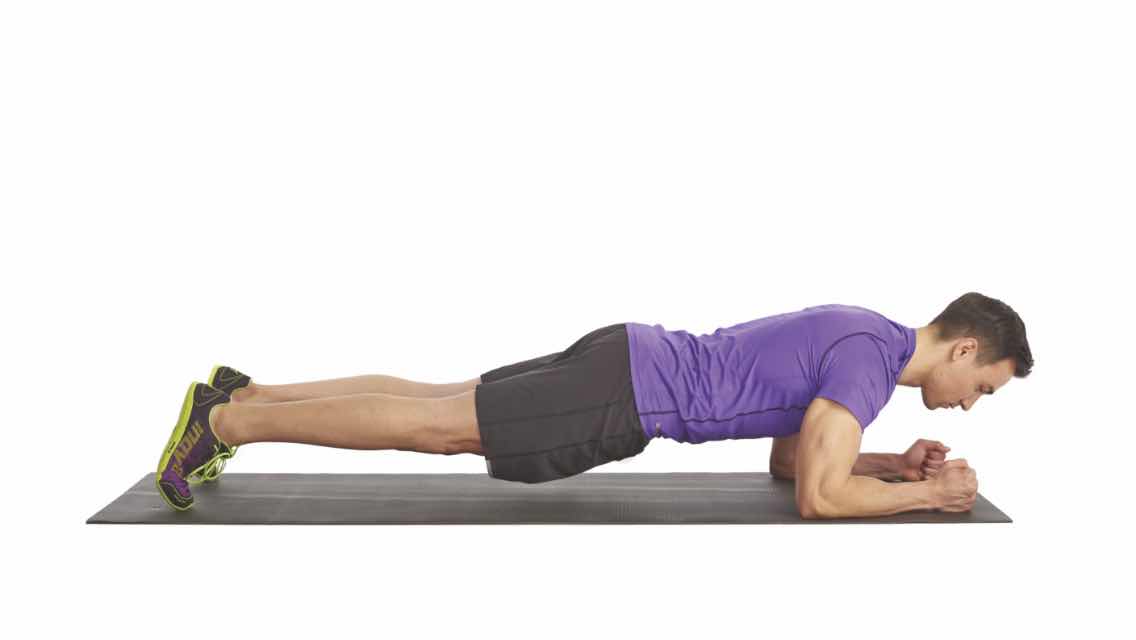
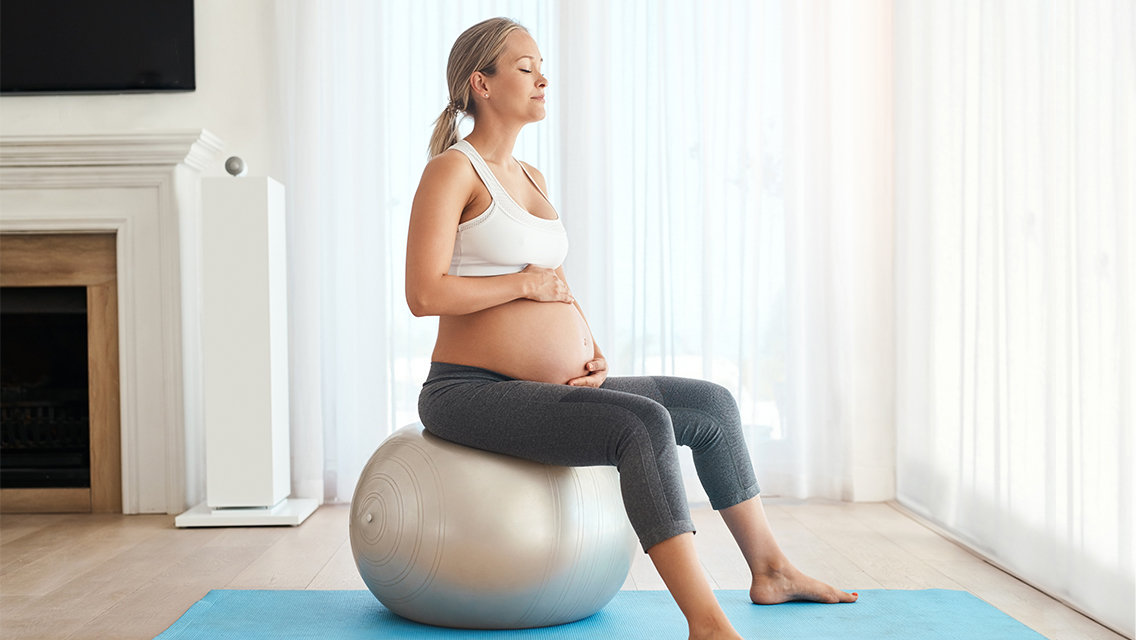
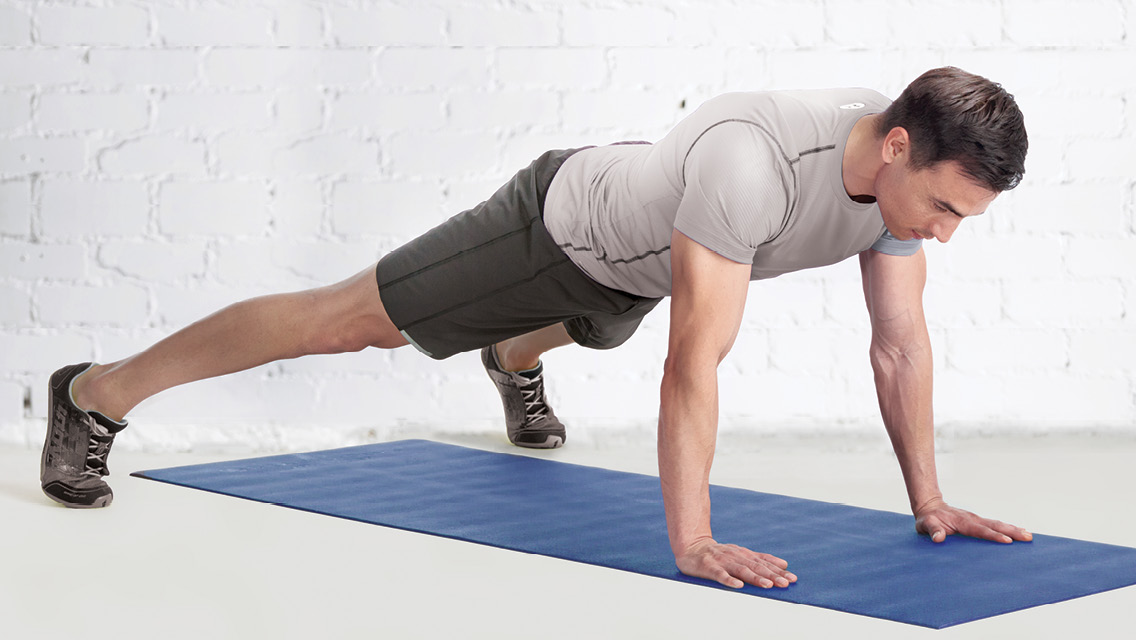
This Post Has 0 Comments